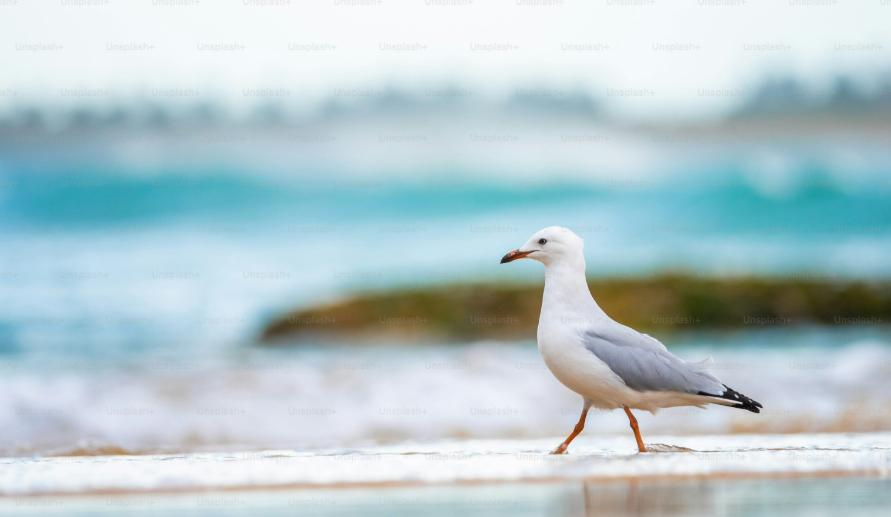The coastal waters of our planet are home to a myriad of fascinating creatures, but few capture the imagination quite like the enigmatic Seagol Mbua. With their striking appearance and captivating behaviors, these birds hold a unique place in both nature and human culture. Whether gliding gracefully over waves or scavenging along sandy shores, they evoke a sense of wonder that draws people closer. Let’s dive into the world of the seagol mbua and unravel their mysteries as we explore their physical traits, behaviors, ecological roles, and much more. Get ready to be enchanted by these coastal marvels!
Physical Characteristics and Habitat
The seagol mbua are striking birds, known for their unique blend of beauty and adaptability. With a wingspan that can reach up to three feet, these seabirds boast sleek bodies covered in glossy feathers ranging from brilliant whites to deep grays. Their sharp beaks are perfectly designed for catching fish and scavenging along the shoreline.
These avian wonders thrive in coastal environments, often found nesting on rocky cliffs or sandy beaches. They prefer areas rich in food sources, which include estuaries and tidal pools where marine life flourishes.
Mbuas are highly social creatures. You’ll often spot them congregating in large groups, especially during feeding times when they dive gracefully into the water to catch their next meal. Their remarkable ability to adapt makes them resilient residents of diverse coastal ecosystems worldwide.
Unique Behaviors and Adaptations
Seagol mbua exhibit fascinating behaviors that set them apart from other coastal birds. Their remarkable ability to forage for food in both water and on land showcases their adaptability.
These birds have developed a unique technique called “scooping.” With swift dives, they can catch small fish or crustaceans just below the surface. This method is not only efficient but also incredibly impressive to witness.
Social interactions among seagol mbua are equally captivating. They often gather in large groups, communicating through a series of distinct calls. This vocalization strengthens their bonds and helps coordinate group activities, such as hunting or evading predators.
Their migratory patterns reveal an instinctual drive towards survival. Seagol mbua travel thousands of miles seasonally, seeking optimal feeding grounds and breeding sites along coastal regions. These adaptations highlight their resilience in ever-changing environments.
The Role of Seagol Mbua in Coastal Ecosystems
Seagol mbua play a vital role in coastal ecosystems. As omnivorous scavengers, they help maintain the balance by consuming various organic matter. This includes leftover fish from fishing boats and carrion along shorelines.
Their feeding habits promote nutrient recycling. By breaking down waste, Seagol mbua contribute to healthier habitats for other marine life. They create opportunities for smaller organisms to thrive.
These birds are also key players in pest control. Their presence helps regulate populations of insects and small animals that might otherwise become overwhelming.
Seagol mbua serve as indicators of environmental health. Changes in their behavior or population can signal shifts in coastal ecosystems caused by pollution or climate change.
Their nesting sites often attract other species, fostering biodiversity within these regions. In this way, Seagol mbua enhance the richness of life along our coastlines.
Threats to Seagol Mbua and Conservation Efforts
Seagol mbua face numerous threats in their coastal habitats. Pollution is one of the most critical issues, as plastics and chemicals contaminate their food sources. Ingesting these materials can be fatal to these birds.
Climate change also plays a significant role. Rising sea levels erode nesting sites, while shifting weather patterns disrupt their feeding habits. As temperatures rise, some species may struggle to adapt.
Human activities such as habitat destruction further exacerbate the problem. Urban development along coastlines often leads to loss of crucial environments for breeding and feeding.
Conservation efforts are underway to protect seagol mbua from these challenges. Organizations focus on habitat restoration, pollution cleanup initiatives, and public awareness campaigns. Engaging communities in conservation practices fosters a sense of stewardship over these vital ecosystems.
Strategies aimed at preserving natural habitats ensure that seagol mbua continue to thrive alongside vibrant coastal landscapes.
Captivating Facts and Folklore
The seagol mbua are steeped in fascinating lore. Many coastal communities believe these birds possess a spirit that guides fishermen to bountiful catches.
In some cultures, they are seen as omens of change, signaling shifts in weather or fortune. Their presence often stirs local legends and stories passed down through generations.
These birds also inspire art and literature, symbolizing freedom and resilience against the harsh sea winds. Their graceful flight captivates artists looking for inspiration.
Their unique calls have been interpreted as messages from ancestors or the sea itself, adding layers of mystery surrounding their existence. This blend of nature and myth elevates the seagol mbua beyond mere wildlife; they become part of cultural identity along coastlines worldwide.
Conclusion
The seagol mbua embody a unique blend of beauty and intrigue. Their striking appearance, combined with their remarkable adaptability to coastal habitats, sets them apart from other avian species. Observing these birds in their natural environment offers insight into the complexities of marine ecosystems.
Their behaviors reveal not just survival strategies but also the interconnectedness of life along coastlines. As they forage for food or glide effortlessly over waves, it becomes clear how vital they are to maintaining ecological balance.
With rich folklore surrounding them and fascinating facts waiting to be uncovered, there’s much more than meets the eye when it comes to seagol mbua. These birds serve as a reminder of nature’s wonders and the importance of preserving our planet’s diverse wildlife for years to come. Embracing this mystique encourages us all to appreciate not only the beauty found in nature but also our role as stewards committed to its preservation.

